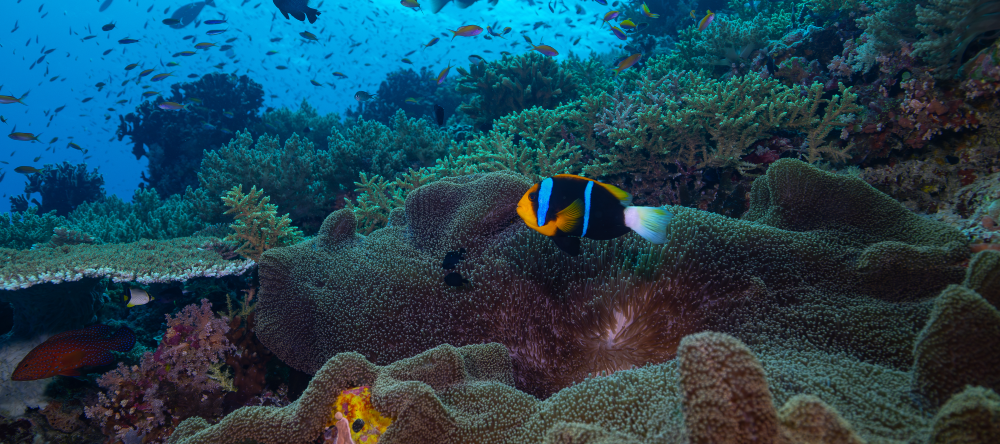- Research
New research expedition uncovers Palau’s rich marine life
A recent research expedition by National Geographic Pristine Seas, in collaboration with MAFE, PICRC, and OneReef, has revealed remarkable findings about Palau’s marine life. Conducted in February and March 2024, the expedition explored the Southwest Islands and offshore habitats of Palau. The goal was to contribute valuable biodiversity data that Palau could use for its Marine Spatial Plan decision-making process.
Using advanced technologies, including baited remote underwater video systems (BRUVS), a deep-sea remotely operated vehicle (ROV), deep-sea cameras, and environmental DNA methods, the research team—composed of Pristine Seas and local partners—documented an incredible diversity of species. The study identified over 500 species of fish, 50 genera of shallow-water corals, more than 200 species of invertebrates, and 38 species of seabirds. The Southwest Islands were found to harbor some of the highest abundances of key species, like yellowfin tuna and silky sharks, ever recorded with these methods in the South and West Pacific regions. The team also observed deep-water species previously unrecorded in Palau’s waters, like sleeping nautilus, chimeras, king crabs, and deep-water stingrays, demonstrating that Palau continues to hold unknown treasures of biodiversity.
Palau’s waters are also home to many species of conservation concern, several of which are listed on the IUCN Red List of Threatened Species, such as hawksbill and green sea turtles, scalloped hammerheads, humphead wrasse, silvertip and grey reef sharks, and Micronesian imperial pigeons. These findings highlight the importance of continuing management efforts to provide refuge for these globally threatened species.
Encouragingly, the study found that areas already under protection, such as Helen Reef – an atoll protected at both local and national levels – are showing signs of recovery. Key species such as groupers, snappers, and herbivores are thriving, demonstrating the effectiveness of Palau’s ongoing conservation initiatives.
However, the expedition also highlighted ongoing threats to Palau’s marine ecosystems. Commercial longline fishing, particularly by foreign fleets, poses a serious threat, leading to the significant depletion of shark populations, which play an important role in healthy ecosystems. Fishing gear was found entangled on nearly every reef surveyed, and reef sharks made up only a small fraction of the fish population, signaling overfishing.
In light of these findings, it is clear that effective marine management is important to protect Palau’s waters. Large protected areas are essential for preserving Palau’s rich biodiversity and ensuring a healthy ocean for future generations. Safeguarding Palau’s marine areas could yield major conservation benefits while also supporting local fisheries – by protecting Palau’s ocean in a way that balances biodiversity conservation with food provisioning, Palau can achieve increased biodiversity benefits, and simultaneously could substantially increase local non-tuna fish catch.
For more detailed findings and information, the full report from the expedition is available here.


